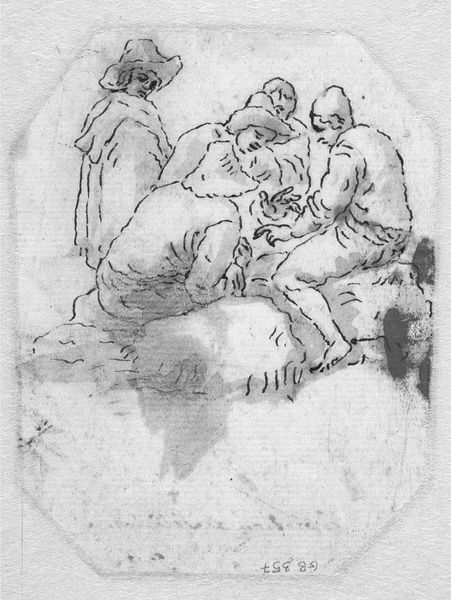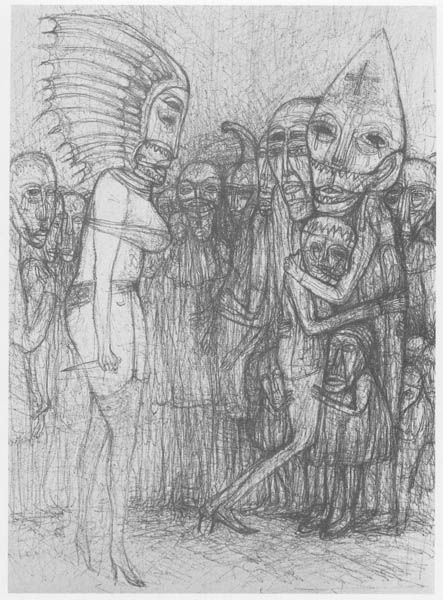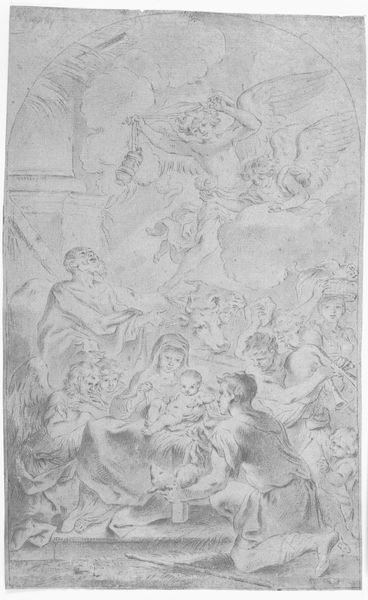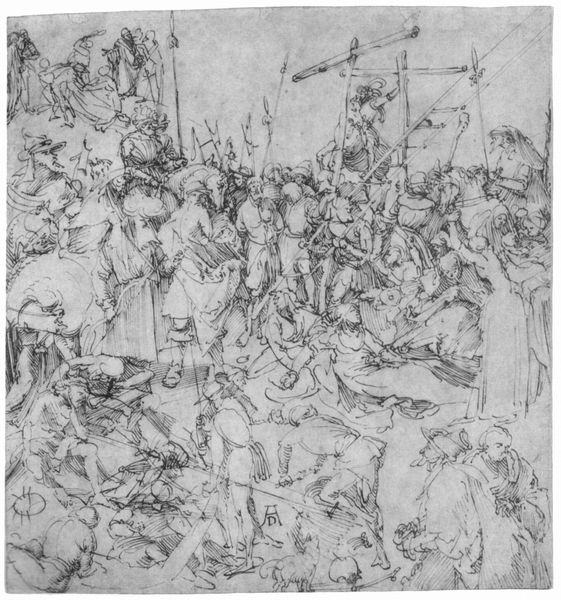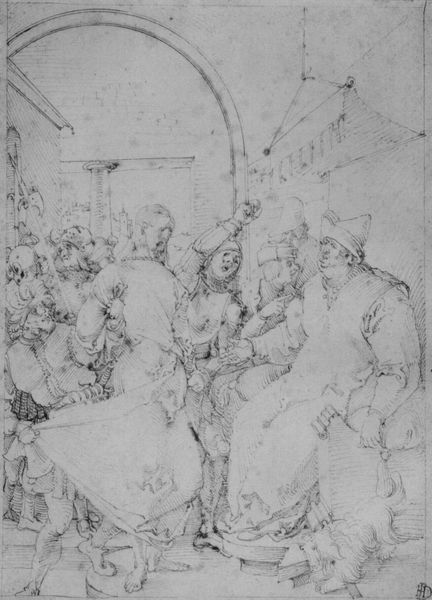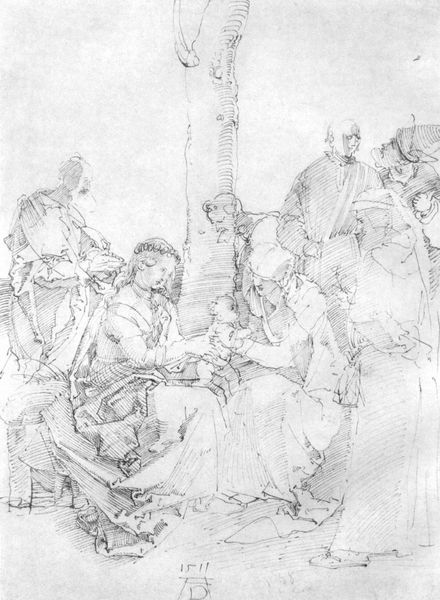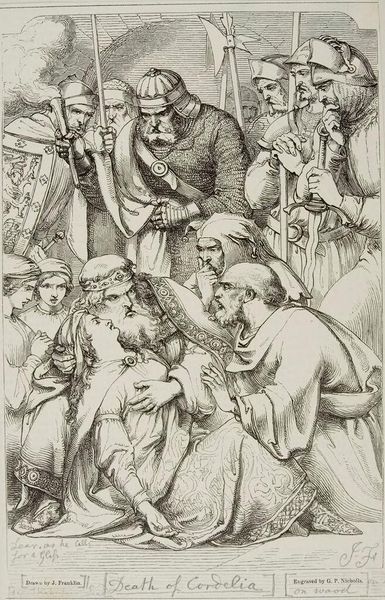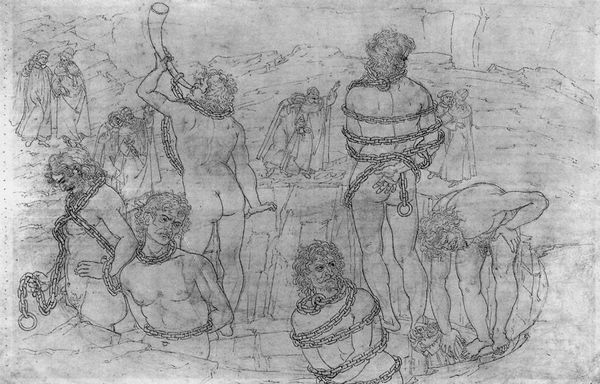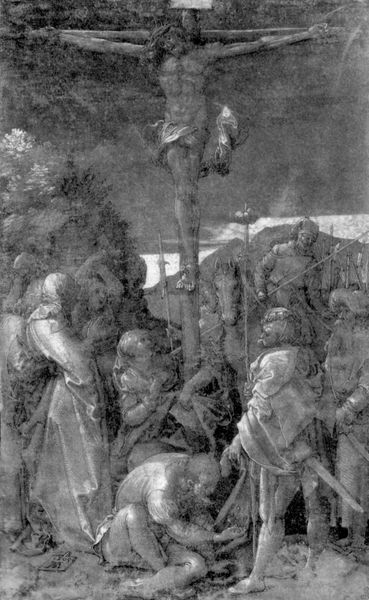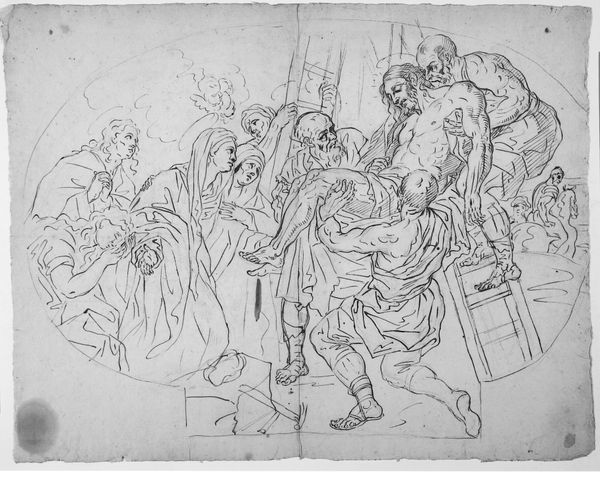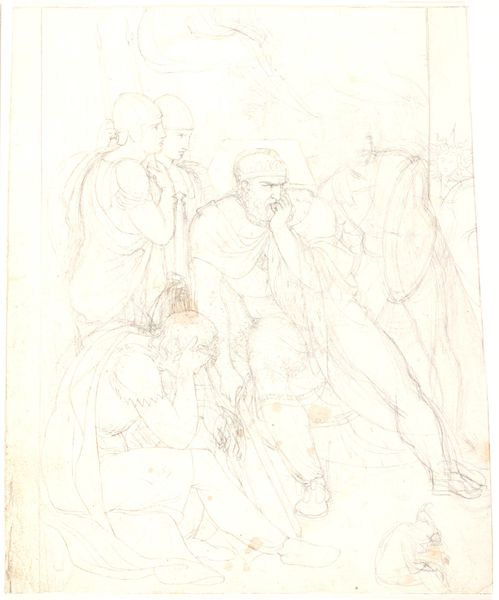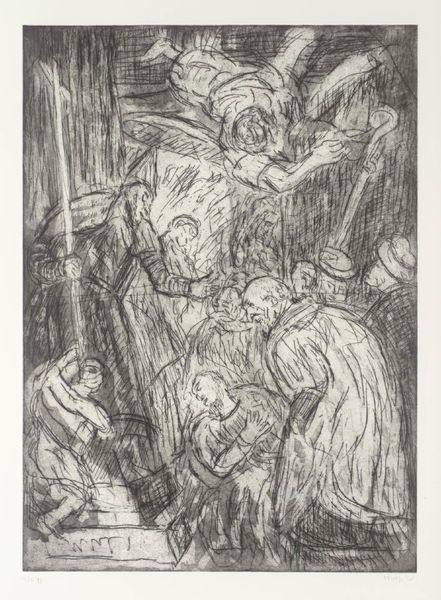
St. Bruno overgiver carteuserordenens regler til sine ordensbrødre 1630 - 1631
0:00
0:00
drawing, pencil, charcoal
#
drawing
#
baroque
#
pencil sketch
#
charcoal drawing
#
figuration
#
pencil
#
pencil work
#
charcoal
#
history-painting
#
italian-renaissance
Dimensions: 246 mm (height) x 183 mm (width) (bladmaal)
Curator: This drawing, "St. Bruno overgiver carteuserordenens regler til sine ordensbrødre," was created by Massimo Stanzione between 1630 and 1631. It's currently held here at the SMK, the National Gallery of Denmark. Editor: The somber tones of charcoal and pencil really set a mood of pious humility, don't they? The stark values lend a real sense of austere dedication. Curator: Absolutely. Stanzione situates us in a period where the church and religious orders played pivotal roles in society. St. Bruno, we see, is handing over the Carthusian order's rules to his brothers, thus solidifying institutional guidelines. The act itself reinforces a specific social hierarchy and devotion to religious structures. Editor: Visually, the drawing guides your eye through its skillful use of light and shadow. Notice how Stanzione employs delicate strokes to build volume and delineate the figures, giving particular attention to the faces. Curator: It’s important to also note the context of the Italian Renaissance from which it springs. Consider, for instance, the influence of the period’s humanistic values on Stanzione’s emphasis on representing human figures in a realistic and expressive manner. It mirrors shifts in religious iconography too, from stylized representation toward a more naturalistic portrayal of spiritual events. Editor: And the composition itself contributes to the solemnity, don’t you think? The arrangement directs attention to Bruno and the rules, while the slightly upward perspective further elevates St. Bruno’s significance within the scene. Curator: Precisely. That elevated placement directly emphasizes St. Bruno's spiritual authority. The scene becomes a representation of obedience and a reflection of the Carthusian order’s broader position within 17th-century religious and social strata. Editor: Ultimately, what resonates with me is how these deliberate formal choices invite contemplation on matters of faith and obedience, a quality achieved through masterful use of fundamental techniques. Curator: And what intrigues me is how this single image encapsulates so much about the power structures of the time and the role of religious imagery in reinforcing them.
Comments
No comments
Be the first to comment and join the conversation on the ultimate creative platform.
